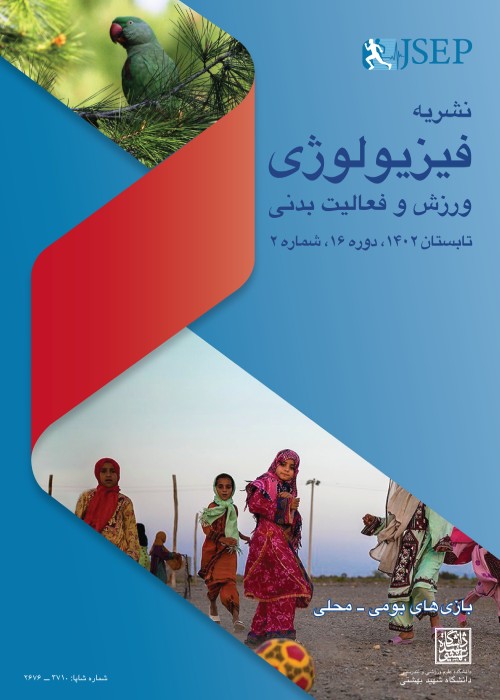The effect of differential and traditional training methods on electromyographic changes of lower body muscles in performing and learning crawl swimming
Making changes and fluctuations in the training components compared to repetitive training can lead to more motor learning based on the principles of system self-organization. The aim of the present study was to investigate the effect of differential and traditional training methods on electromyographic changes of lower body muscles in performing and learning crawl swimming.
In this study, 36 swimmers aged 20 to 25 years who had no experience in swimming training were selected as a sample and randomly divided into three groups of control, traditional exercises and differential exercises. Experiments of experimental groups in 12 sessions, during which,they learned to do breaststroke in a traditional and differential way. Before and after 12 training sessions, the mean Muscle activity based on root mean square index (RMS) and the mean time of activity of the muscles of the right thigh, anterior buttock and internal twins of the swimmers were measured.
Based on the results of Bon Ferroni test, the mean RMS of Rectus femoris, Biceps femoris (P = 0.001), tibialis Anterior (P = 0.04) and Gastrocnemius (P = 0.005) of swimmers of the differential group is significantly larger than the control group in the post-test. This difference between differential and traditional group is also significant (P ≤ 0.05). But there is no significant difference between the control and traditional group (P > 0.05). In the post-test, only the activity time average of Rectus femoris in the differential group is larger than the traditional group (P = 0.046). The activity time average of tibialis Anterior muscle in both training groups are larger than the control group in post-test (P < 0.05), but there is no significant difference between differential and traditional training groups (P > 0.05). The activity time average of Gastrocnemius in the differential (P = 0.001) and traditional (P = 0.041) groups are significantly larger than the control group, but this difference between the differential training group and traditional training group is not significant (P > 0/05). Also, the activity time average of biceps femoris muscle in the differential training group is higher than the control group (P = 0.001), but there is no difference between the differential and traditional groups and also the traditional and control groups (P < 0.05).
The results of the present study indicate that differential exercises are more effective than traditional exercises in learning crawl swimming.
- حق عضویت دریافتی صرف حمایت از نشریات عضو و نگهداری، تکمیل و توسعه مگیران میشود.
- پرداخت حق اشتراک و دانلود مقالات اجازه بازنشر آن در سایر رسانههای چاپی و دیجیتال را به کاربر نمیدهد.




